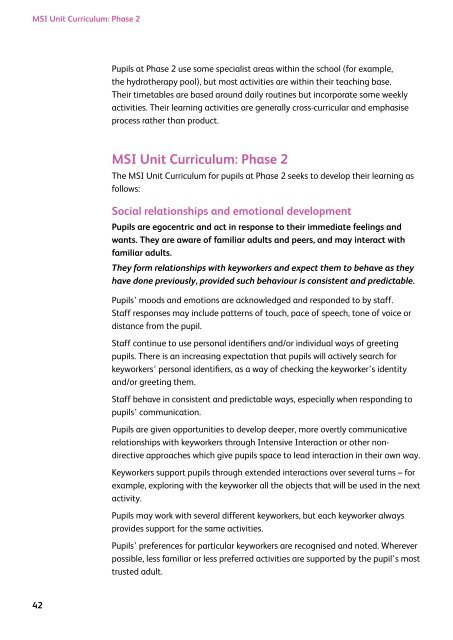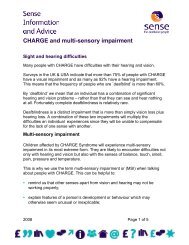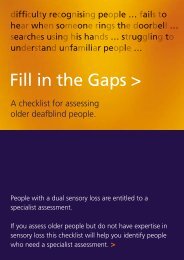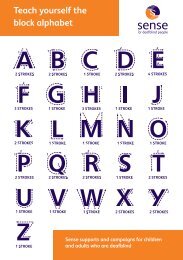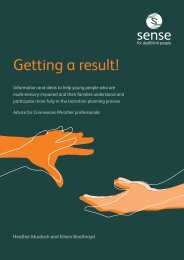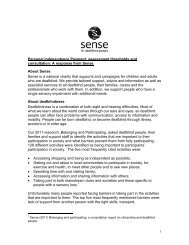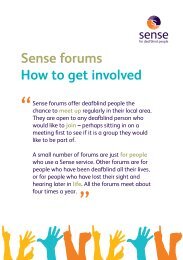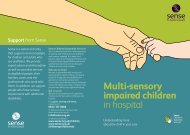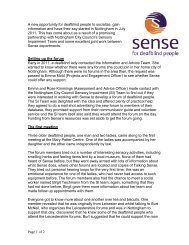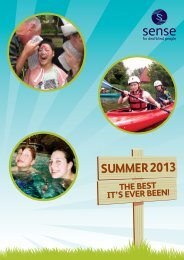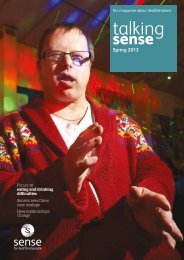MSI Unit Curriculum - Sense
MSI Unit Curriculum - Sense
MSI Unit Curriculum - Sense
You also want an ePaper? Increase the reach of your titles
YUMPU automatically turns print PDFs into web optimized ePapers that Google loves.
<strong>MSI</strong> <strong>Unit</strong> <strong>Curriculum</strong>: Phase 2Pupils at Phase 2 use some specialist areas within the school (for example,the hydrotherapy pool), but most activities are within their teaching base.Their timetables are based around daily routines but incorporate some weeklyactivities. Their learning activities are generally cross-curricular and emphasiseprocess rather than product.<strong>MSI</strong> <strong>Unit</strong> <strong>Curriculum</strong>: Phase 2The <strong>MSI</strong> <strong>Unit</strong> <strong>Curriculum</strong> for pupils at Phase 2 seeks to develop their learning asfollows:Social relationships and emotional developmentPupils are egocentric and act in response to their immediate feelings andwants. They are aware of familiar adults and peers, and may interact withfamiliar adults.They form relationships with keyworkers and expect them to behave as theyhave done previously, provided such behaviour is consistent and predictable.Pupils’ moods and emotions are acknowledged and responded to by staff.Staff responses may include patterns of touch, pace of speech, tone of voice ordistance from the pupil.Staff continue to use personal identifiers and/or individual ways of greetingpupils. There is an increasing expectation that pupils will actively search forkeyworkers’ personal identifiers, as a way of checking the keyworker’s identityand/or greeting them.Staff behave in consistent and predictable ways, especially when responding topupils’ communication.Pupils are given opportunities to develop deeper, more overtly communicativerelationships with keyworkers through Intensive Interaction or other nondirectiveapproaches which give pupils space to lead interaction in their own way.Keyworkers support pupils through extended interactions over several turns – forexample, exploring with the keyworker all the objects that will be used in the nextactivity.Pupils may work with several different keyworkers, but each keyworker alwaysprovides support for the same activities.Pupils’ preferences for particular keyworkers are recognised and noted. Whereverpossible, less familiar or less preferred activities are supported by the pupil’s mosttrusted adult.42


